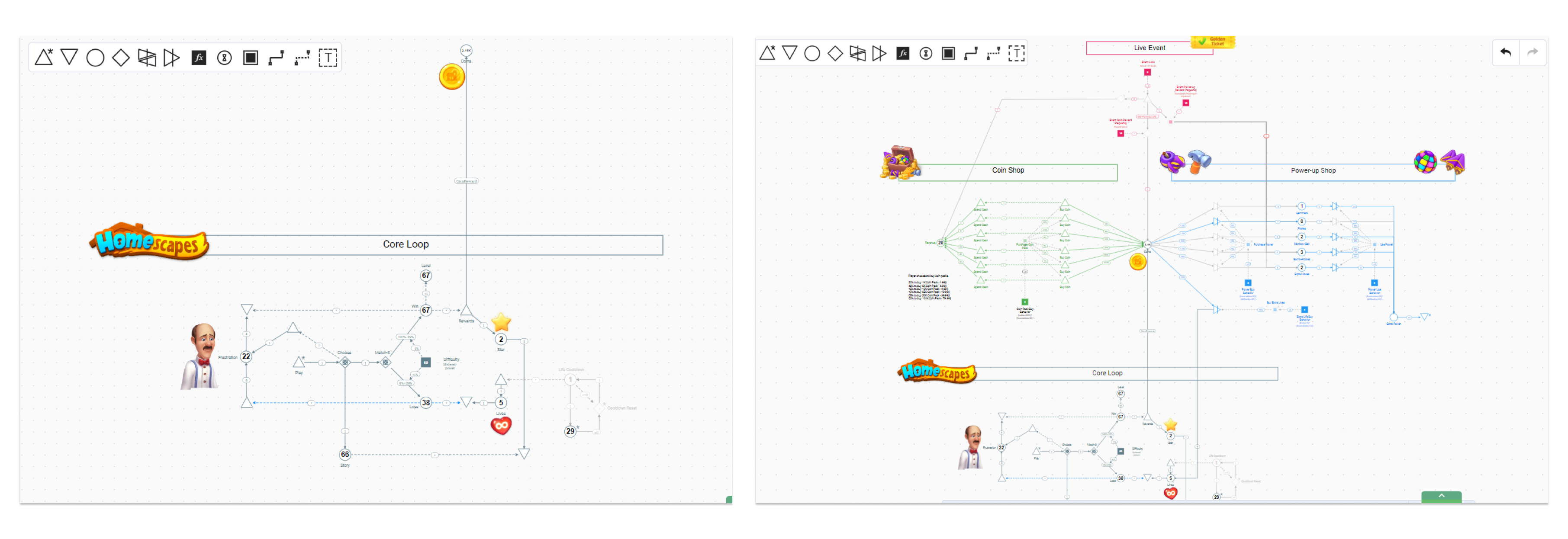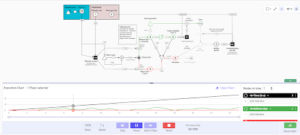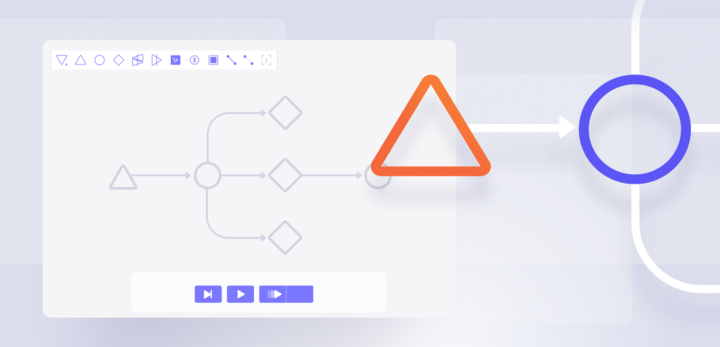Communication is an important part of our daily life. Even though we do it every day, good communication takes practice, repetition, and reflection. From our experience, when it comes to communicating inside a game development team, things do not always work great. But there is one thing that worked all the time as a tool for communication: presentations.
At Machinations, we’ve presented diagrams & outcomes to hundreds of teams. In this article, we’ve rounded up our architects’ experience and came up with some tips and tricks for a successful presentation.
Know Your Audience
The first step for a good presentation of your work is to know your audience. You have to define the reasons behind your presentation (why?), your public (who?) and the way in which you are going to deliver it (how?).
Understanding the background of your audience, their interests, knowledge and involvement in the project are critical. For example, if you show your diagram to a concept designer, you should highlight the elements that align with their interests, such as the aesthetics and overall design principles that contribute to the creative aspect of the project.
Clarity in Design
“Different people are likely to interpret the same presentation or the same words in different ways.”
In the LiveOps whitepaper, we dedicated a chapter to the Clarity in Design issue. The most common challenge teams face with maintaining design clarity is that information is scattered across multiple tools, tabs or sheets. These tools become difficult to manage and understand by anyone else but their initial creators.
This leads to inefficiencies and mistakes and makes it harder to communicate progress or status or translate the game into business terms, all of which slow down the entire development process.
Clarity and discrete control over game mechanics allow game design teams to balance a game’s internal economy for particular goals and facilitate their translation into code without confusion.
How are you going to deliver the presentation?
The way in which you design the presentation might vary depending on the stage of your work. If you are in an initial phase where you need ideas, you should focus on gathering inputs. If you have finished your diagram and you want to present it to your colleagues, who will continue the project, you have to give them as many details as possible.
A good way to present your work in Machinations is to use visual elements, such as images, charts, or the diagram itself. Machinations is a visual tool where you can see elements and how they work together, so this helps a lot in understanding the idea behind the model.
Your presentation should adopt a layered approach, gradually unveiling elements. Provide an overview, ensuring that everyone comprehends the fundamental aspects. As you delve deeper, highlight specific components that align with the diverse interests of our audience.
Let’s take the following example:
Here is a deconstruction of the game Homescapes. Initially, the model is simplified to the Core Loop. There are 3 hidden layers, which are interconnected: Coin Shop, Power Shop and Live Event. You can gradually unfold the layers by making them visible. The layers are color coded and have titles and pictures on them. All of these features make your model easier to follow and understand.

Monologues are boring, so make sure your presentation is interactive. When presenting, do live demonstrations and Q&A sessions. Most importantly, be open to improve your model by asking for peer feedback. By allowing them to make changes and observe real-time effects, you capture their attention and make the presentation more engaging.

Summarize your presentation
Last but not least, don’t forget to summarize your presentation and reinforce the key concepts presented. In this way, you can consolidate information, enhance understanding, and define the next steps of the project, whether it’s sharing the Machinations diagram, testing, or seeking feedback. It ensures that the audience leaves the presentation with a clear and cohesive understanding of the model and its implications.
Ineffective communication might be the explanation for a variety of problems that occur during game development, such as misunderstandings about features and mismatched creative visions. Knowing your audience, having a clear design with a layered approach, fostering interactivity and summarizing key concepts can transform a presentation into a helpful game development tool.


